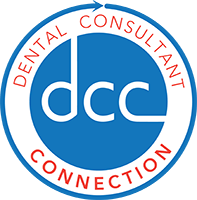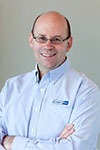If you are a practice owner, this is a MUST READ. This post can save you 100’s of thousands of dollars. Embezzlement is dental practices is a much larger problem than most think. Published statistics suggest that the chance of a dentist being defrauded in his or her career exceeds 60%, with an average loss of over $100,000. David Harris, president of Properident will open your eyes with this post … please take time to read this. Robin Morrison
It is difficult to describe the range of emotions felt by a dentist when he or she becomes convinced that a trusted staff member is stealing. Dentists who have been victimized describe feelings of anger, despair, guilt and even in some cases, fear. Many report a feeling of being violated, almost in the same way that you would feel if you returned from vacation to find your house vandalized. If you suspect, right now, you might be a victim of fraud in the dental office, contact me right away. Not sure? Keep reading.
Fraud takes place in dental offices far more frequently than most dentists realize – published statistics suggest that the chance of a dentist being defrauded in his or her career exceeds 60%, with an average loss of over $100,000.
The other emotion commonly reported is a desire to act – when a dentist suspects embezzlement, there is a strong urge to deal with the problem (which in the dentist’s mind normally involves confronting the suspect) immediately.
Unfortunately, this completely understandable urge to take action, combined with a dentist’s inexperience (and often the inexperience of his or her advisors in dealing with this problem) in matters relating to fraud, often result in the dentist making missteps that often can worsen their position, instead of improving it. Possible outcomes of an incorrect approach include destruction of evidence, wrongful dismissal lawsuits, denied insurance claims and an inability to prosecute.
The following actions and considerations are based on long experience in advising dentists who know or suspect that they are being defrauded:
1. Stealth is paramount. This is so for several reasons – normally at this point fraud is SUSPECTED but not CONFIRMED. It is not unheard of for a dentist to wrongly believe that he or she is a victim.
On the one hand, if there is no fraud, it is far better that staff members are unaware that the dentist had a “crisis in confidence” in them. However, if fraud is happening and the thief thinks that you are on to them; their normal inclination is to take steps to destroy evidence. For example, erasing data from your computer’s hard drive and destroying all backups. We were not involved but did observe a situation where an employee, sensing that the dentist was about to uncover her fraud, burned down the entire office to make reconstruction of her crimes almost impossible.
If a theft is taking place, the best outcome for the dentist will be achieved by preserving evidence, conducting a quiet (stealthy) investigation and confronting the thief only when fully prepared.
There are several things that must be done in order to preserve stealth:
- The dentist must continue to act normally and avoid behaving unusually.
- Investigation must be done in a way that does not disclose the dentist’s suspicions. The easiest way to tip your hand is to have a couple of people in business suits (who look a lot like accountants) come into the practice and start poring over records or to start having a unusually large number of non-patient phone calls for the dentist.
- The dentist must be extremely guarded about discussing suspicions with colleagues, staff members etc. We were involved in a situation where a relative of the suspect worked at the vendor of the dental software used by the dentist, so great care had to be taken in communication with the software company.
2. Obtain professional advice. Some dentists approach fraud investigation as a do-it-yourself project. Given that the dentist typically does not know what to look for (and often needs the assistance of staff to access computer information in any case), self-guided fraud investigation is likely to accomplish little other than tipping off the fraudster.
Who can help you? At this point, knowing where to turn is vital. What is needed is expertise in investigative techniques, fraud methodologies specific to dentistry, evidence preservation and knowledge of dental software. At this juncture many dentists consult their CPA, their Attorney, law enforcement agencies or their dental software vendor. All of these people can offer some help; however each of them typically lacks an element necessary to properly guide the dentist forward. For example, while your Attorney may have a good understanding of civil and criminal proceedings against thieves, typically a lawyer’s understanding of embezzlement techniques used in a dental office is superficial at best.
As much dental fraud takes place “off the books”, what many CPA’s can accomplish is also limited.
Police forces normally lack the resources to properly investigate this type of white collar crime and generally will only pursue dental fraud once a loss report has been given to them.
When engaged, an experienced fraud investigator should take charge of the process and coordinate the work of the other actors involved (Attorney, software vendor, law enforcement agencies etc).
3. Preserve evidence. Your computer’s hard drive contains a cornucopia of information that will be needed to confirm the fraud, quantify losses, prepare an insurance claim, proceed with prosecution etc. However this information is volatile and can be deliberately erased or overwritten by the normal activities of your dental software. It is absolutely vital that the computer-based evidence be preserved. Normally this is accomplished by performing a backup that is not “rotated” like most backup media. In certain cases, we also perform a procedure known as “ghosting” a hard drive – this makes an exact copy of an entire hard drive including working or “temporary” files that are not normally captured by a backup but may contain important information. We also typically move a complete copy of your dental software onto one of our servers so that we can both preserve and study it.
Dental software vendors make continual improvements to their software. A common recommendation of vendors, if contacted with concerns about theft, is to upgrade your software to the latest version. Our suggestion is that this is probably not a good idea in most cases. Forensic investigation often involves retracing the steps of the perpetrator; this is made complicated if the software has changed. Also, such a step will undoubtedly be resisted by, and raise the suspicions of the thief.
4. Do not place “bait” (e.g. put an extra $20 in the cash to see if it goes missing). This action is likely to provide a false sense of security. Employees who target their dentists often perpetrate sophisticated frauds involving tens or hundreds of thousands of dollars. If you were doing this and the dentist offered a (fairly transparent) chance to demonstrate your honesty by returning the $20, wouldn’t you give it back? This seems like a fantastic bargain. Also, if the money does disappear we don’t necessarily know who took it.
5. Do not change financial protocols. Looking to make changes without being able to explain the rationale will certainly be seen through by a thief.
6. Do not report the incident to police (until you have sufficient evidence to confirm fraud). Making a police report before you have gathered all the evidence serves no purpose and may limit your options in dealing with a thief.
7. Do not confront the suspect. There will be a time when this is appropriate – out success rate in obtaining confessions from thieves is 100%, but it requires careful preparations before the confrontation.
8. Do not contact insurance companies. If a theft involves obtaining extra funds from insurance companies (e.g. upcoding of treatment), the insurance company may have recourse against the dentist for amounts misappropriated. Some insurance companies will provide agreement not to hold the dentist vicariously liable in situations where the dentist had no involvement in the theft, but this amnesty needs to be set up correctly, with an intermediary approaching the insurance company on behalf of an unnamed client.
9. Whatever you do, don’t fire anyone until evidence has been gathered – the amount the employee may steal from you in the few weeks that it will take to complete an investigation pales in comparison to the cost of a wrongful dismissal lawsuit.
Learn more about David Harris and Dental Consultant Connection at https://www.dentalconsultantconnection.com/

